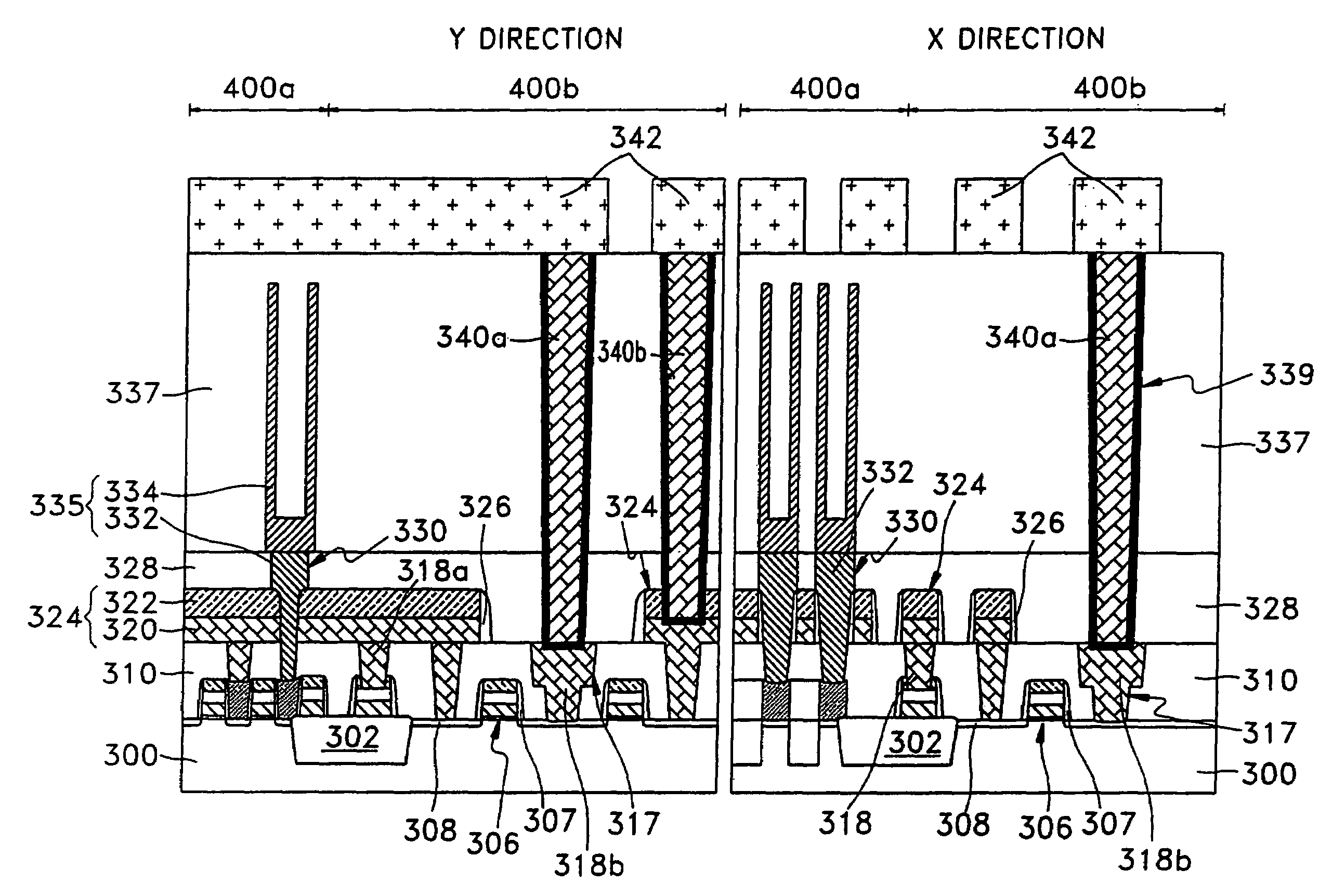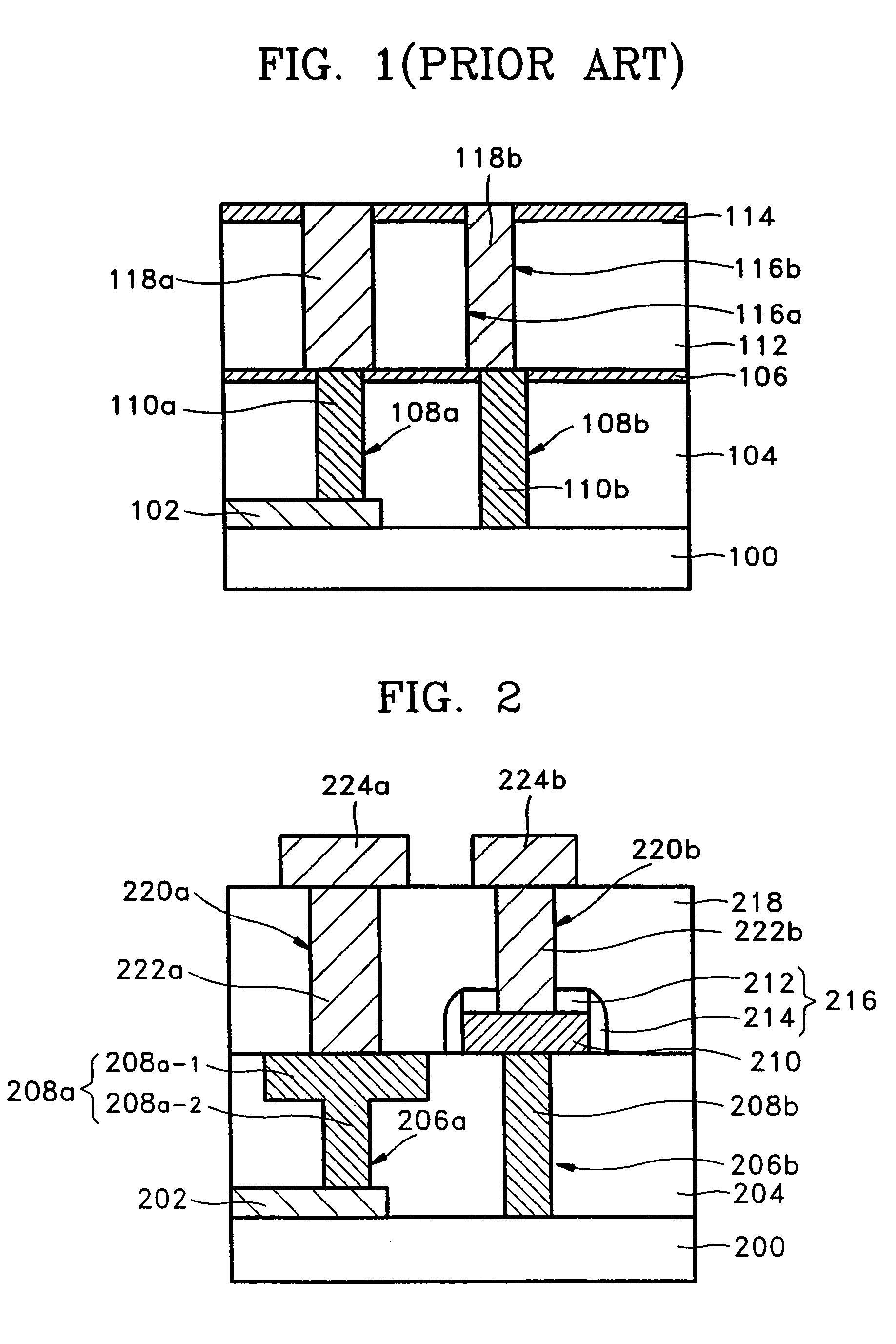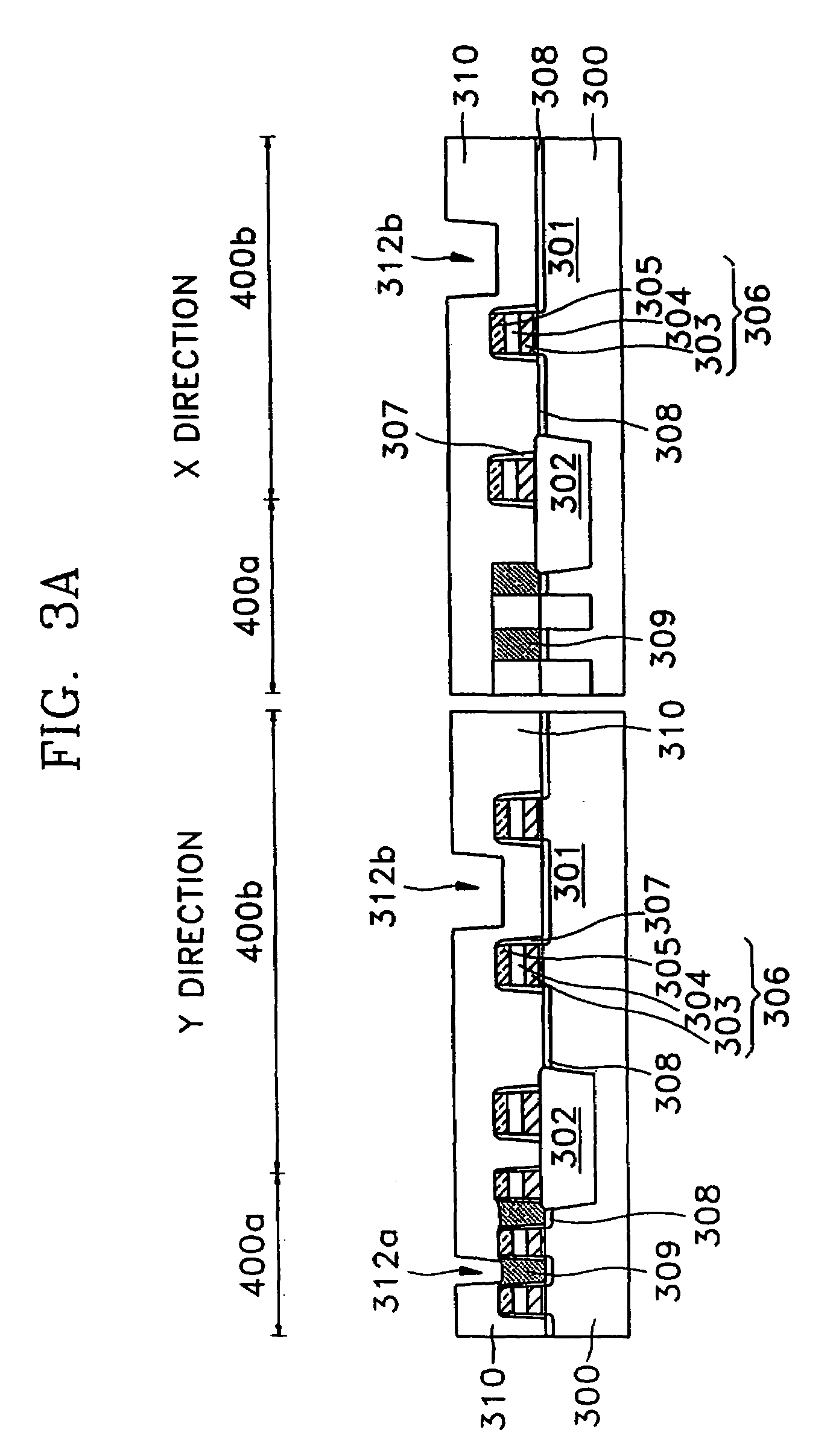Semiconductor device having multilayer interconnection structure and manufacturing method thereof
a technology of interconnection structure and semiconductor device, which is applied in the direction of semiconductor device, semiconductor/solid-state device details, electrical apparatus, etc., can solve the problems of high risk of short-circuit between neighboring circuit patterns, easy short-circuit between neighboring conductive patterns, and difficulty in securing a safe distance between patterns in the horizontal direction, so as to prevent short-circuit
- Summary
- Abstract
- Description
- Claims
- Application Information
AI Technical Summary
Benefits of technology
Problems solved by technology
Method used
Image
Examples
embodiment 1
[0036]FIG. 2 is a sectional view of a semiconductor device according to an embodiment of the present invention, and the principles of the present invention will be described with reference to FIG. 2. A conductive pattern 202 is initially formed on a semiconductor substrate 200, and a first interlevel dielectric (ILD) layer 204 is formed on the conductive pattern 202. Lower stud holes 206a and 206b are formed in the first ILD layer 204 to expose portions of the conductive pattern 202 and the semiconductor substrate 200, and the lower stud holes 206a and 206b are filled with a conductive material, thereby forming lower studs 208a and 208b. Here, one lower stud 208a of the lower studs 208a and 208b has the width of an upper portion (hereinafter, an entrance part 208a-1) adjacent to the surface of the first ILD layer 204 larger than the width of a lower portion (hereinafter, a contacting part 208a-2) adjacent to the semiconductor substrate 200. Preferably, the width of the upper, entran...
embodiment 2
[0042]Typical applications of the present invention will be realized based on the drawings of FIGS. 3A through 3G. Here, FIGS. 3A through 3G are sectional views for each process of the multilayered interconnection structure of a memory device including a cell region and a peripheral region according to another embodiment of the present invention. In the drawings, “X” directions denote, for example, bit line-extended directions, and “Y” directions denote, for example, word line-extended directions.
[0043]Referring to FIG. 3A, a semiconductor substrate 300 on which a memory device is to be formed, is provided. A device isolation layer 302 is formed on a portion of the semiconductor substrate 300, thereby defining an active region 301. Also, a cell region 400a on which memory cells and bit lines are formed, and a peripheral region 400b on which peripheral circuits for assisting a memory cell region, such as peripheral interconnections and input / output circuits, are formed, are defined b...
embodiment 3
[0058]FIGS. 4A and 4B are sectional views for each process of the multilayer interconnection structure of the memory device including the cell region and the peripheral region according to another embodiment of the present invention. In this embodiment, since the steps of forming the gate electrodes 306, the junction region 308, the contact plug 309 on the semiconductor substrate 300 are the same as in the second embodiment, only the following steps will be described. Further, the same reference numerals are used in the same part of the embodiment as that of the second embodiment.
[0059]Referring to FIG. 4A, a first photoresist pattern (not shown) is formed on the first ILD layer 310 so that the selected gate electrodes 306 and the junction region 308 may be exposed. Here, a reticle (not shown) for forming the first photoresist pattern can be the same as that of the photoresist pattern 314 (see FIG. 3B). Next, the first ILD layer 310 is etched as the photoresist pattern, thereby form...
PUM
 Login to View More
Login to View More Abstract
Description
Claims
Application Information
 Login to View More
Login to View More - R&D
- Intellectual Property
- Life Sciences
- Materials
- Tech Scout
- Unparalleled Data Quality
- Higher Quality Content
- 60% Fewer Hallucinations
Browse by: Latest US Patents, China's latest patents, Technical Efficacy Thesaurus, Application Domain, Technology Topic, Popular Technical Reports.
© 2025 PatSnap. All rights reserved.Legal|Privacy policy|Modern Slavery Act Transparency Statement|Sitemap|About US| Contact US: help@patsnap.com



